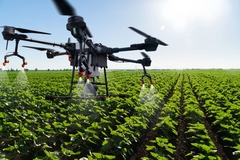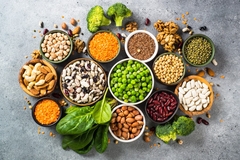Coffee, bees and an appetite for more: How ofi shifts the sustainability lens “from ambition to action”
08 Dec 2021 --- The price of coffee beans has doubled over the last year partly due to record freight costs and extreme weather events in Brazil, olam food ingredients (ofi) is highlighting. The supplier has released its outlook detailing the progress of its on-the-ground operations to boost the resilience and equity of its coffee farming operations.
Speaking to FoodIngredientsFirst, Vivek Verma, CEO coffee at ofi details that the recent surge in prices doesn’t make up for years of low prices and climate shocks. “With coffee trees taking up to five years to mature, farmers are left licking their wounds for several seasons.”
“Meanwhile demand has stayed stable despite hospitality closures, with consumers recreating their favorite espresso or cold brew at home. But now they expect more,” he remarks.

“Customers and consumers don’t just want to know about the origin of what they buy, but also that their coffee carries a positive story for the people and environment it came from.”
Evidently, Innova Market Insights’ “Transparency Triumphs” Top Trend for 2021 continues to maintain its hold across the food chain, with contact-free and secure product information in high demand.
Looking through the coffee lens
It has been one year since olam food ingredients announced its public commitments for a more sustainable coffee future, with Coffee LENS (Livelihoods, Education, Nature at Scale).
In this time the industry has continued to battle COVID’s socio-economic fallout with many asking whether it will be one shock too many for smallholder coffee farmers.
For impact at scale, a whole-farm approach is required, the company stresses. “To make coffee viable for farmers, we need to look beyond one crop at how to increase total income,” says Juan Antonio Rivas, senior vice president & global head of sustainability and business development – coffee at ofi.
“With research partners like the International Institute of Tropical Agriculture (IITA), we’re assessing which crops are compatible to grow with coffee to increase total farm output,” he details. “Cassava for example, is a major food crop as well as generator of cash income, but it needs to be grown separately from coffee so the two crops don’t compete.”
“Leguminous plants like Calliandra are a useful nitrogen fixer and works well among coffee trees. In addition to replacing the need for nitrogen fertilizer, it’s an incredibly low-maintenance tree for farmers and its foliage can be used for animal feed.”
“Calliandra’s extensive root system also helps rainfall penetrate the soil, thereby retarding runoff and preventing landslides. This is proving very useful in origins with high soil moisture content like DRC, where erosion is a major challenge for coffee farmers. Lemongrass also serves as an effective soil binder, in addition to its medicinal properties.”
In South America, ofi is working with Heifer International on the Beyond Coffee project.
“We’ve been able to determine which diversification support and activities generate the biggest returns for farmers. In Nicaragua, it’s passion fruit trees, supplied with farm maintenance kits; in Honduras it’s beehives and honey production; and in Mexico it’s hens and egg production,” says Rivas.
“We’ve been joined by multiple partners in the second phase of the project, allowing us to scale up these activities and put over 6,000 coffee households on a path to a Sustainable Living Income by 2025. Cross-cutting strategies on gender inclusion and climate-smart practices will also ensure there are no trade-offs between social and environmental goals.”
Getting to the root of the issue
Supplying every farmer with a few bags of fertilizer would seem a logical and fair intervention to help boost their yields and income even further. However, Verma concedes that the reality on the ground tells a very different story.
Agronomists at ofi, together with its data analysts, realized that the effect of the fertilizer wasn’t the same on all farms.
For larger farms, the fertilizer wasn’t enough to cover all trees, so those that were missed did not improve their yields. Other farmers didn’t see any improvement because they hadn’t pruned or weeded.
“So the fertilizer fed the weeds and excess branches rather than the fruit,” says Verma. “Some farmers used it for other food crops or even sold their fertilizer because they needed cash to feed their families or cover school costs for their children.”
Farmer segmentation
“Providing equal support to every farmer does not yield equal results,” he stresses. “It requires a tailored approach.”
“This is where farmer segmentation comes in. By categorizing farmers according to farm size, yields, skills and motivations, we can tailor services to individual farmer needs.”
As an example of farmer segmentation, farmers with relatively large plots of land but low yields due to poor farm maintenance are linked with well-trained pruning teams to carry out essential farm maintenance.
“This is done before providing them with any fertilizer,” explains Verman. “And on the other end of the spectrum, where you have the poorest farmers with less than a hectare, crop diversification, basic farm tools and additional revenue streams are more meaningful services.”
Farmers need to see value in climate-smart coffee
In DRC, ofi working with expert partners[ to improve coffee production for 8,500 farming households, as a way of reducing poaching and deforestation around the Kahuzi-Biega National Park.
“But rather than positioning the former as services provided by us, the farmers should see the park itself as their support system, as a source of clean water, seedlings and healthy soils,” says Rivas.
“There are also short terms wins for people and planet,” he details. “We’re experimenting with biochar for example, as an alternative nutrient source to fertilizer. It’s based on the concept that when the biochar is submerged in the fermentation tanks in washing stations, it absorbs all the bi-products from the waste-water.”
“Supercharged with organic matter, it can then be buried in the soil beneath the coffee trees to feed them with a slow-release of rich nutrients.”
The company will be publishing its first full impact report early next year to align with its annual sustainability reporting.
By Benjamin Ferrer













